
A 16th Century day at the Chateau de Vincennes
For more historical information please visit their web site. (You know you are in the 21st century when a 15th century chateau has a web site.)

To get into the chateau, naturally one must cross this bridge over the moat. It's no longer a draw bridge and the moat is now dry.

Here's a diagram of the layout of the chateau. The next few pictures are taken inside the enclosure, which is a very large space.

This is the "donjon," the oldest part of the chateau completed in 1373 and recently restored. It has only been open since May, 2007.
King Charles V was one of the early occupants of the chateau. The donjon is surrounded by a wall and another dry moat.

Once you go through the gate into the area around the donjon there is another bridge. I took this photo looking down from that bridge, which again used to be a draw bridge, but this area below it was not a moat. This was living space for he king's entourage. The stairway on the left with its open windows is unusual.
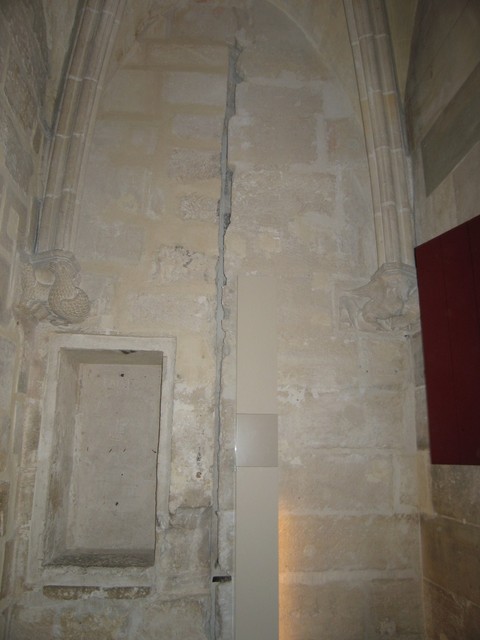
This room was added on by King Charles V. He used this space as an office, storing papers and valuables in that alcove. The room was at that time paneled in wood. This picture shows the gap between the original exterior wall and the added on wall. This is a very small space.
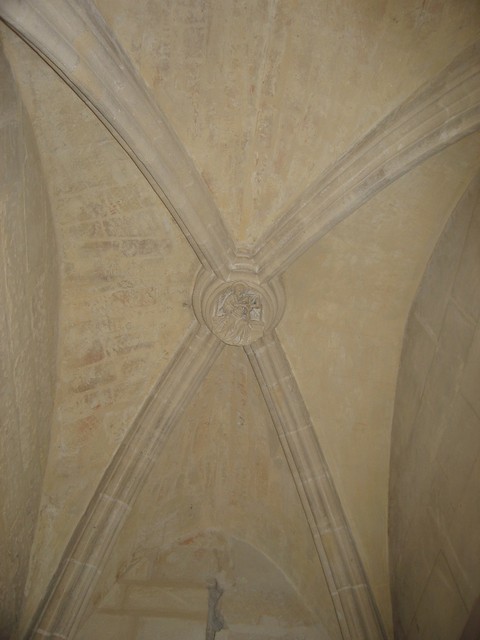
The ceiling in this small royal office.

Back out in the main courtyard, looking toward the main entrance. The donjon is off to the left out of the picture.

The "Sainte Chapelle" or Holy Chapel, built between 1380 and 1552.

Inside the Sainte Chapelle. It is similar in construction to the "Sainte Chapelle" in Paris.

Two tourists visiting the chateau. (Really--they are just visitors)

Le Pavillon du Roi. This more modern addition was added in the 17th c. and was designed by the architect who designed Versailles. There is an identical Pavillon de la Reine facing it across the court. Both were open on this day, but are normally closed to visitors.

A painted wall inside the Pavillon du Roi. Only the doors and chair are real objects.
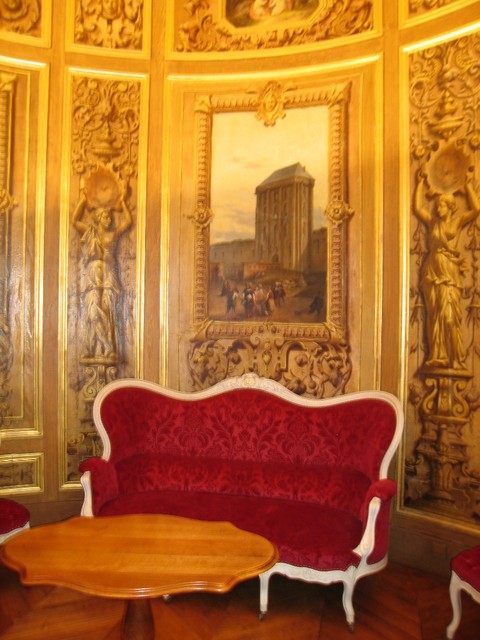
This is inside the identical "Pavillon de la Reine." Both buildings were occupied by the Germans in the 1940's and set on fire by them when they moved out, so the interiors have been partially restored. There is very little of the original decoration intact. This is more faux painting.
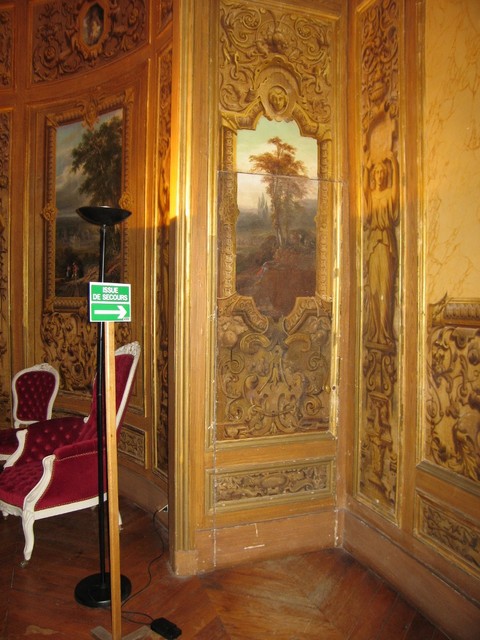
See the emergency exit? Without the sign it would be particularly hard to find. I waited here for an emergency, because I wanted to go through it, but no one set fire to the building while I was in it. Darn! I had to leave through the door I came in by. It's so hard to find a good arsonist when you want one.

A few of the ladies of the court dressed for tonight's ball.

The court jester.
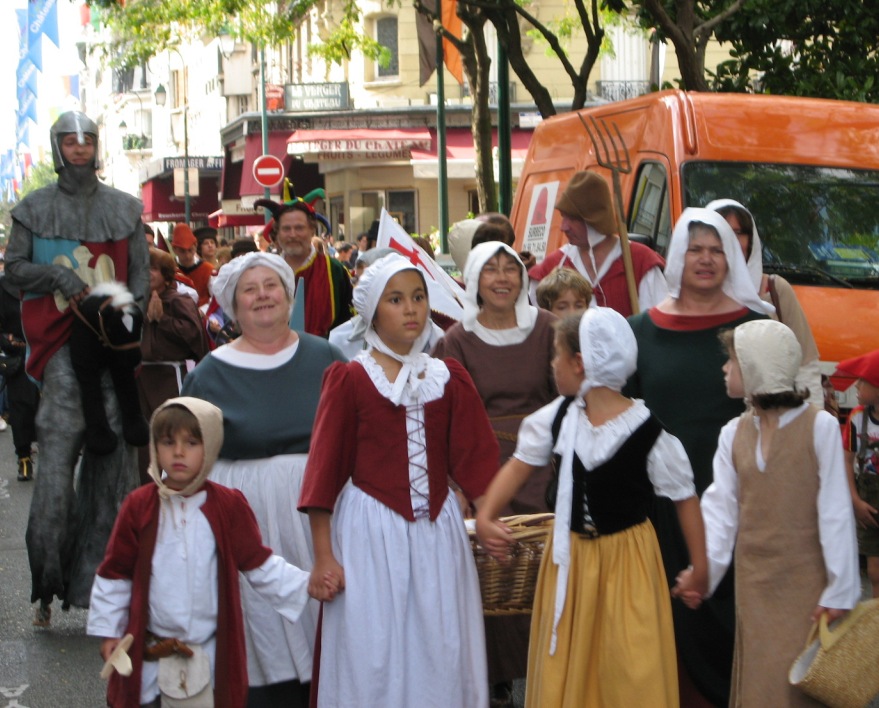
Some of the townspeople and a knight on a horse.
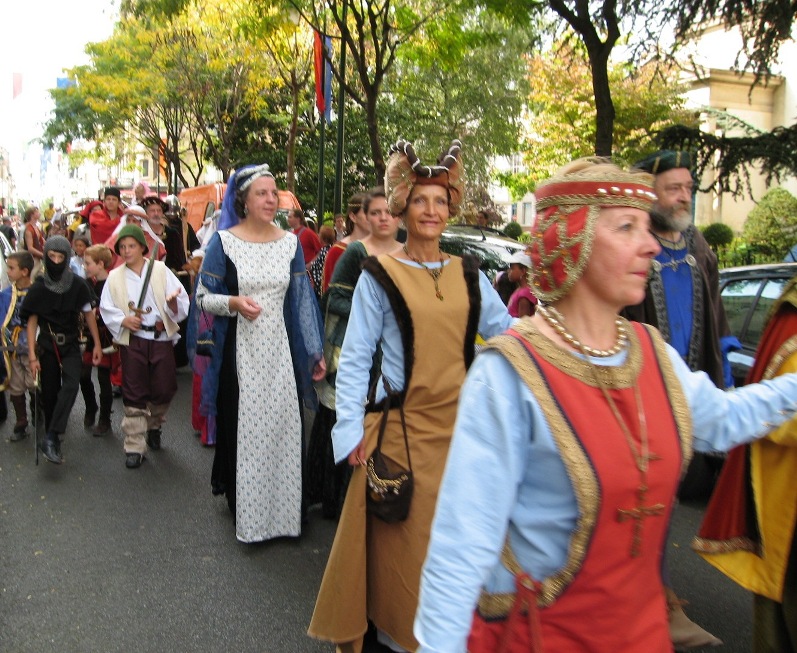
More courtiers
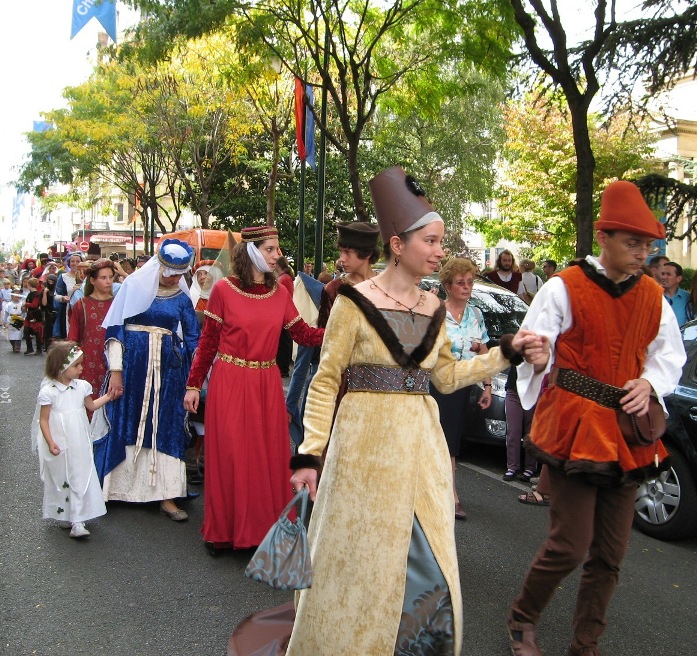
and more

And bringing up the rear of the parade, the knights and ladies on horseback. I wondered why they didn't lead the parade until I followed the parade out of the castle. Then I realized why it was better to put the horses at the end.
At this point I had to take a bus back to the 21st century, so I missed the ball. I didn't have anything to wear anyway, so they wouldn't have let me in. Medieval costume was "obligatoire."
______________________________________________________________________
I'd love to hear from you, so send me an e-mail if you should feel so inclined.